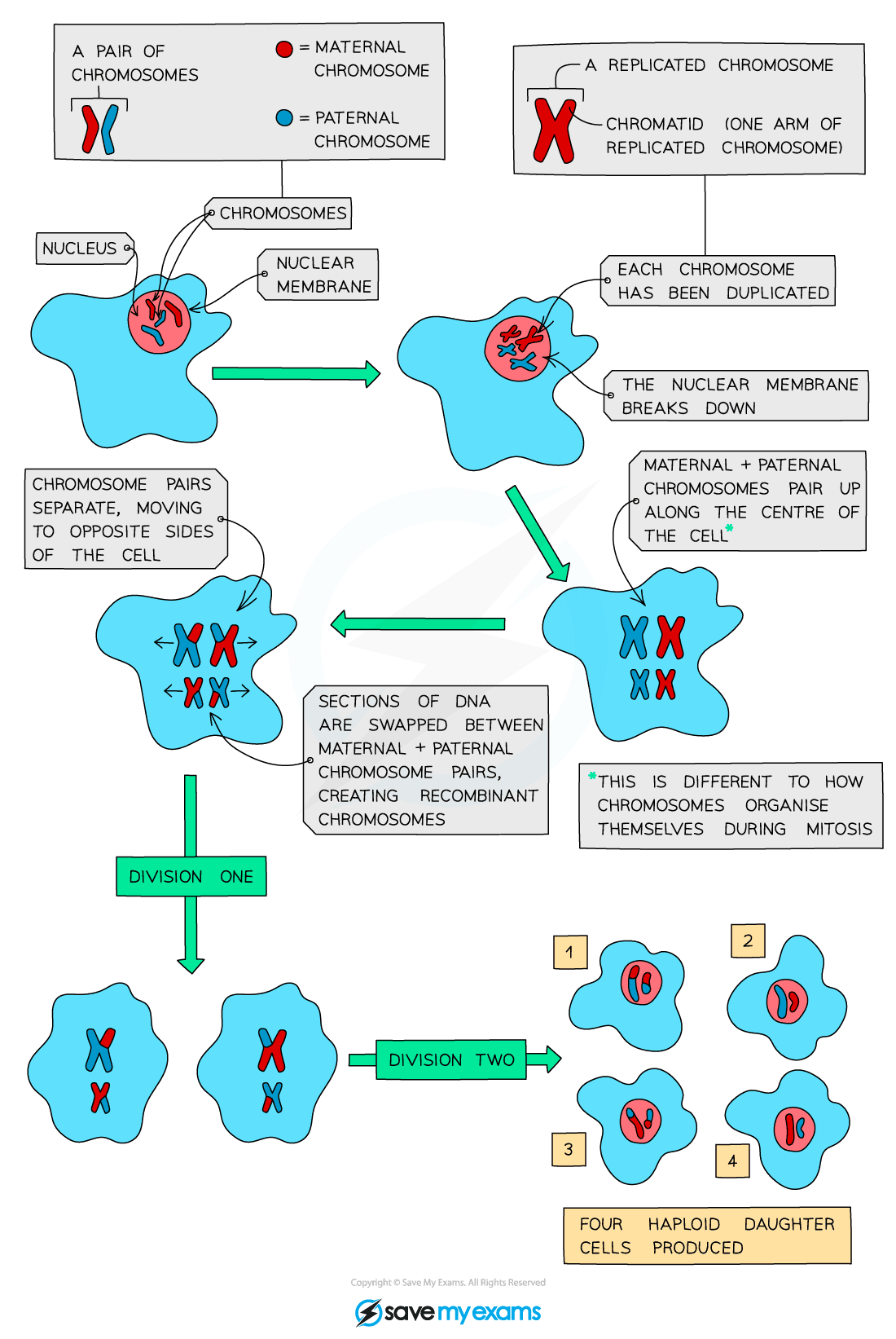The Role of Meiosis
- Cells in reproductive organs divide by meiosis to form gametes (sex cells)
- The number of chromosomes must be halved when the gametes are formed
- Otherwise, there would be double the number of chromosomes after they join at fertilisation to form the zygote (fertilized egg)
- This halving occurs during meiosis, and so it is described as a reduction division in which the chromosome number is halved from diploid to haploid, resulting in genetically different haploid gametes
- It starts with chromosomes doubling themselves as in mitosis and lining up in the centre of the cell
- After this has happened the cells divide twice so that only one copy of each chromosome passes to each gamete
- We describe gametes as being haploid – having half the normal number of chromosomes
- Because of this double division, meiosis produces four haploid daughter cells
The process of cell division by meiosis to produce haploid gamete cells
The importance of meiosis
- Produces gametes e.g. sperm cells and egg cells in animals or pollen grains and ovum cells in plants
- Increases genetic variation of offspring
- Meiosis produces variation by forming new combinations of maternal and paternal chromosomes every time a gamete is made, meaning that when gametes fuse randomly at fertilisation, each offspring will be genetically different from any others
Exam Tip
You are not required to know the stages of meiosis for your exam. They are only included here to help with your understanding of the role of meiosis (i.e. the production of four daughter cells, each with half the number of chromosomes, which results in genetically different haploid gametes).


